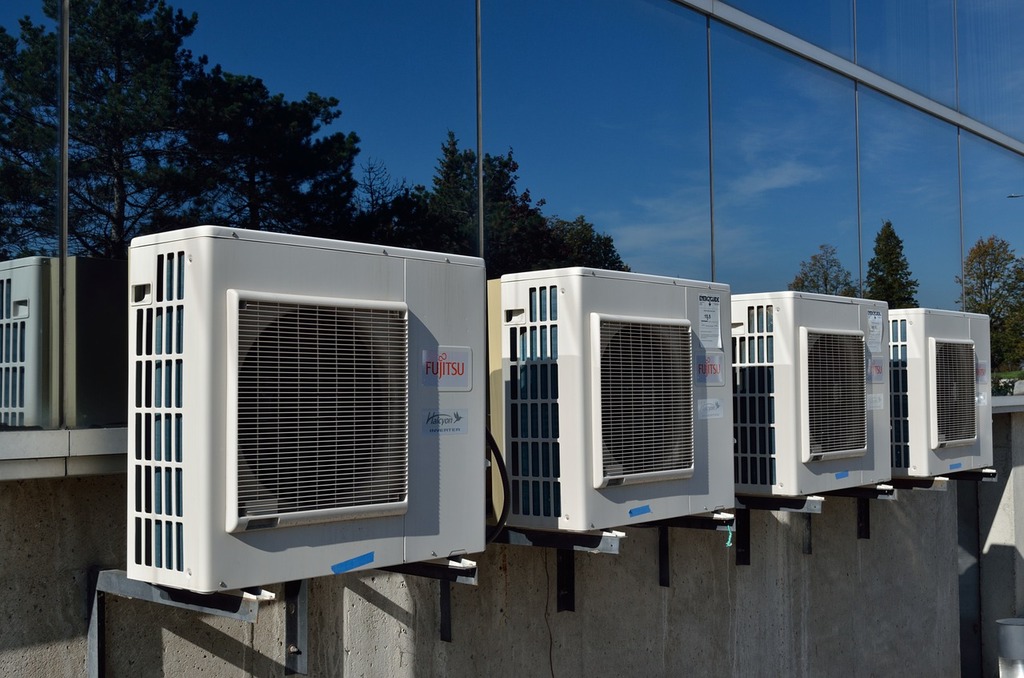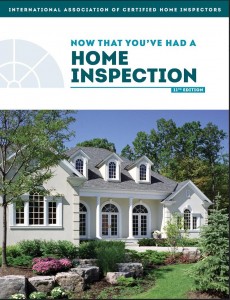Drastic reductions in energy costs can be achieved through very simple changes, most of which homeowners can do themselves.
Signs of HVAC Danger: Key Red Flags Home Inspectors Spot in Georgia
February 24, 2025Maintaining a functional and safe HVAC system is essential for Georgia homeowners, given the state’s hot and humid climate. The sweltering summers and mild winters in Georgia make reliable heating and cooling a necessity, not just for comfort but also for health and safety. Without a properly functioning HVAC system, you could be exposed to heat-related illnesses, poor air quality, and other hazards.

In Georgia, especially in areas like Atlanta and Dunwoody, the importance of regular HVAC maintenance cannot be overstated. Certified home inspection Georgia play a critical role in identifying potential issues before they become major problems. During a certified home inspection, these professionals look for key red flags that indicate an HVAC system is not operating correctly.
For instance, strange noises, foul odors, and inconsistent airflow are all signs that something might be wrong with your HVAC system. These symptoms can point to malfunctioning components, poor air quality, or even fire hazards. By hiring experienced Dunwoody home inspectors, you can guarantee that any potential dangers are identified and addressed, helping you maintain a safe, efficient, and comfortable living environment. Regular inspections are indispensable in preventing costly repairs and ensuring the longevity of your HVAC system.
Red Flags of HVAC Danger Home Inspectors Spot
When you notice unusual signs from your HVAC system, it’s a clear indication that something is amiss. Home inspectors are trained to identify these red flags of HVAC danger during a home inspection, ensuring your safety and the efficiency of your system.
Excessive Dust or Debris in Ductwork
Excessive dust or debris in the ductwork of your HVAC system can be a significant red flag, indicating potential issues with air quality, system efficiency, and even health risks. When dust and debris accumulate in the ducts, they can restrict airflow, forcing your heating and ventilation system to work harder to maintain your desired temperature. This increased strain can lead to higher energy consumption and increased utility bills, as the system has to operate more intensively to overcome the blockages.
During a Greene home inspection, inspectors will look for signs of dirty ducts, such as reduced airflow, unusual odors, or visible dust around vents. Regular cleaning of the ductwork is vital to prevent these issues and guarantee your HVAC system operates efficiently and safely. By maintaining clean ducts, you can improve air quality, reduce energy costs, and extend the lifespan of your heating and ventilation system.
Strange Noises (Banging, Hissing, Whistling)
Strange noises from your HVAC system can be a clear indicator of underlying problems that need immediate attention. During Georgia home inspections, these noises are a key red flag that inspectors look out for.
Banging or Clanking Noises If you hear banging or clanking sounds, it could indicate loose or malfunctioning parts within your HVAC system. For example, a loose blower fan belt or a malfunctioning compressor in your air conditioning system can cause these noises. In furnaces, ignition problems or ductwork expansion can also result in similar sounds.
Hissing Noises Hissing sounds are particularly alarming and often signify a refrigerant leak or high pressure in the compressor of your air conditioning system. This can lead to unsafe operating conditions and increased energy bills. Leaking air ducts can also produce a hissing or whistling noise as conditioned air escapes.
Whistling Noises Whistling noises typically point to airflow issues, such as ductwork leaks or blockages. This can affect the efficiency of your HVAC system and may also indicate a refrigerant leak or high internal pressure in the compressor. Addressing these issues promptly is vital to maintain system efficiency and safety.
Promptly identifying and addressing these strange noises can prevent larger, more costly problems and guarantee the safe and efficient operation of your HVAC system. Regular inspections by certified professionals are essential for maintaining your system’s health and your home’s safety.
Foul or Burning Smells
If you notice foul or burning smells emanating from your HVAC system, it could be a sign of serious underlying issues that require immediate attention. Here are some common causes of these odors:
Overheating Components
A burning smell can often indicate that a component in your HVAC system is overheating. This could be due to a clogged air filter, which restricts airflow and causes the blower motor to work harder, leading to overheating. Replacing the air filter is the first step, but if the smell persists, the blower motor might need to be replaced.
Electrical Issues
Burning smells that resemble melting plastic or have a fish-like scent can indicate electrical problems. These issues include worn electrical connections, short circuits, or a faulty capacitor. These problems can lead to dangerous electrical fires, so it is vital to turn off the system and contact an HVAC technician immediately.
Worn-Out Parts
A burning rubber smell can signify a worn-out fan belt in older AC systems. This belt drives the blower fan, and when it wears out, it can overheat and produce this odor. Similarly, worn-out bearings in the motor can also produce a burning smell, especially if accompanied by high-pitched grinding noises.
Addressing these issues promptly is essential to prevent further damage and guarantee the safety and efficiency of your HVAC system. If you are unsure about the cause or how to resolve the issue, it is best to consult a professional HVAC technician.
Inconsistent Airflow
Inconsistent airflow from your HVAC system can be a major red flag, indicating several potential issues that need your attention. If you notice that some rooms in your home are warmer or cooler than others, or if the airflow seems weaker than usual, it could be a sign of underlying problems.
One common cause of inconsistent airflow is blocked or leaky ducts. Inspect your ductwork for any blockages, damage, or leaks, as these can substantially reduce airflow and lead to uneven temperature distribution.
Dirty or clogged filters are another frequent issue. Check your filters regularly, as dirty filters can restrict airflow and reduce the overall efficiency of your HVAC system. High particle counts measured by tools like the Fluke 985 Particle Counter can indicate the need for filter cleaning or replacement.
Malfunctioning fans or blowers can also lead to inconsistent airflow. Use tools like the Fluke 902 FC HVAC True-RMS Clamp Meter to diagnose electrical issues with the fan motors and confirm they are operating within specified parameters.
Addressing these issues promptly can help maintain peak HVAC system performance, enhance indoor comfort, and improve energy efficiency.
Frequent Cycling (System Turns On and Off Too Often)
Frequent cycling, where your HVAC system turns on and off too often, is a significant red flag that indicates potential issues with your heating and cooling system. This phenomenon, known as short cycling, can lead to increased energy bills, unnecessary wear and tear, and more costly repairs down the line.
Several factors can cause short cycling. One common issue is a dirty or clogged air filter, which restricts airflow and causes the system to overheat, leading to premature shutdowns. Another cause is an oversized HVAC system that heats or cools your home too quickly, resulting in short cycles and inefficient energy use.
Low refrigerant levels or a leak can also trigger frequent cycling, as the system struggles to maintain the desired temperature. A malfunctioning thermostat, whether due to incorrect calibration or poor placement, can send incorrect signals to the HVAC system, causing it to turn on and off repeatedly.
Water Leaks Around the System
Water leaks around your HVAC system are a significant red flag that can indicate several underlying issues. These leaks can arise from various components and are often a sign of a larger problem that needs immediate attention.
One of the most common causes of water leaks is a clogged or damaged condensate pipe or pump. Over time, dust, dirt, and moisture can accumulate in the drain line, causing blockages or rust, which can lead to leaks. Similarly, the condensate pump can malfunction due to mold growth or wear and tear, preventing it from efficiently removing excess water[1][3][5].
Another potential cause is a frozen evaporator coil, which can occur due to a clogged air filter or low refrigerant levels. A dirty air filter restricts airflow, causing the coil to get colder than usual and eventually freeze, leading to water leaks when it thaws.
Additionally, issues with the condensate pan, such as cracks or rust, can also result in leaks. Regular inspections and maintenance are vital to identify and fix these problems before they cause further damage to your system and your home. Addressing these leaks promptly can prevent more costly repairs and guarantee the continued efficiency and safety of your HVAC system.
Cold or Hot Spots in the Home
Why are some areas of your home uncomfortably cold or hot while others are just right? This issue, known as hot and cold spots, can be a significant comfort and energy efficiency problem. The primary cause of these temperature irregularities is often the improper distribution of conditioned air from your HVAC system.
Hot and cold spots can indicate several underlying issues. One common problem is inadequate insulation in your home, which allows heat to escape or enter unevenly. Another issue is air leaks and gaps around windows, doors, and other areas, which can disrupt the balanced airflow.
Poorly designed, damaged, or leaky ductwork can also lead to these temperature imbalances. If your ducts are not sized properly or are blocked, it can prevent air from reaching all rooms evenly[3]. Additionally, malfunctioning thermostats, dirty or clogged air filters, and obstructed vents can all contribute to hot and cold spots.
To address these issues, inspect your insulation, seal any gaps, and check your vents for blockages. Adjusting air vents and ensuring proper airflow can also help. If the problem persists, it may be necessary to have a professional inspect your HVAC system to identify and fix any underlying issues.
How Home Inspectors in Georgia Address HVAC Concerns
When dealing with hot and cold spots in your home, it’s clear that proper HVAC function is key. Home inspectors in Georgia play a vital role in addressing HVAC concerns to guarantee your home remains safe, efficient, and comfortable.
During an inspection, inspectors thoroughly assess the HVAC system, checking for various red flags. They inspect the cooling system, including the air conditioning unit’s age, condition, and efficiency, looking for issues like refrigerant leaks, dirty or damaged coils, and proper thermostat functionality.
Inspectors also examine the ventilation system, scrutinizing ductwork for leaks, damage, and proper insulation. They check air filters for cleanliness and correct installation, as dirty filters can reduce air quality and system efficiency. Additionally, they inspect fans to guarantee they are operating correctly and maintaining effective ventilation.
Regular maintenance is a key focus. Inspectors look for signs of inadequate maintenance, such as dirty components, worn-out parts, and electrical issues like improper wiring or faulty connections. They also listen for unusual noises and check for consistent airflow throughout the home to identify potential problems early.

 An inspection is just the start of keeping your home in good condition. With each inspection we offer a free book filled with home maintenance tips and other valuable information. Please
An inspection is just the start of keeping your home in good condition. With each inspection we offer a free book filled with home maintenance tips and other valuable information. Please